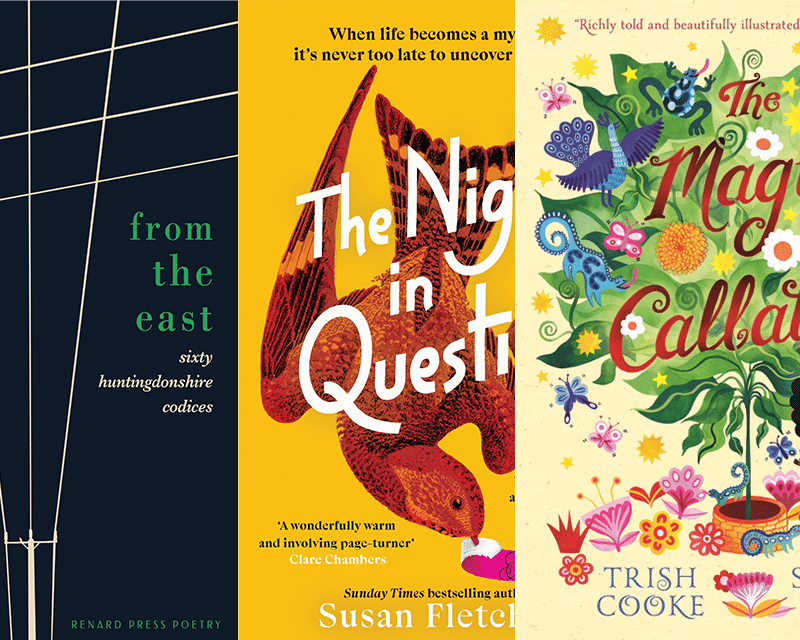- Collected
- Article
In Search Of Past Meals
History through food

- 29 March, 2021
- Lizzie Collingham
Recently I was asked to speak to a writing class about how writers use food to evoke a sense of place. I realised I had never given the question any conscious thought. This seems odd given that I am a food historian and my books have taken me to many places: Mughal palaces, Boston taverns, the Eastern Front, seventeenth-century Ireland, colonial India, war-torn Tokyo.
The archetypical symbol of the power of food to evoke place is Proust’s madeleine. In À la recherche du temps perdu Marcel takes a bite of cake and experiences a rush of happiness. He has to think hard in order to retrieve the memories that would account for his feelings of joy. But eventually he recalls that as a child he would visit his Aunt Léonie on Sunday mornings and she would dip a madeleine in her lime-flower tea and give him a piece. It is then that his other memories follow, unfurling in his mind like Japanese paper flowers in a bowl of water. It occurs to him that his recollections of Aunt Léonie’s small house in the town of Combray with its grey houses and stone-cobbled streets have all been ‘poised [within his unconscious mind for] a long time, like souls, ready to remind us’.
Surely written descriptions of food work in just the same way. As George Saunders (author of Lincoln in the Bardo) put it in an interview: ‘A flawed human being writes something and 60 years later a reader picks up the book and something in them rises to meet it.’ Taste and smell are powerful means of reawakening the impressions poised within the reader’s mind because these senses are intimately linked to memory.
Nigel Slater begins his autobiography Toast with an encounter between his nine-year-old self and his mother. She is scraping a piece of burnt toast out of the window, something she does ‘as surely as the sun rises each morning. In fact, I doubt if she has ever made a round of toast in her life that failed to fill the kitchen with plumes of throat-catching smoke’. Slater provides no details of what the kitchen looks like but as I read this passage I can see yellow cupboard doors, black and white lino and chipped Formica worktops. My own childhood kitchen has risen to meet the acrid smell of burnt toast. Small details of smell, taste, sight or sound, trigger the reader to unconsciously fill in the spaces in a piece of writing. Without noticing, the reader becomes a co-author.
When an author tells us that an aroma was ‘wonderful’ or that a sauce was ‘delicious’ this works less well because the adjectives deaden the prose by filling the space where the reader’s imagination might have stepped in. Such writing conveys that the author liked the smell and taste of the food but fails to co-opt the reader and place them within the text. More effective is when the reader is told that the author can smell a sauce reducing on the stove or that the waffles were cooked in irons held over a fire. Such descriptions encourage the reader to draw on her own memories. She calls to mind the process by which a good sauce is boiled down to intensify the flavour or the crisp outside and soft inner texture of waffles and fills in their smell and taste.
It is all very well to evoke food and place but a quick glance at virtually any advice for would-be fiction writers warns that all description whether of food or place (or indeed anything else) should only be there to help the reader see what the characters feel. The role of food and place is to move the story forwards. Slater does this. He uses the episode of the burnt toast to show us how he felt about his mother: ‘People’s failings, even major ones such as when they make you wear short trousers to school, fall into insignificance as your teeth break through the rough, toasted crust.’ Descriptions of food and place are unlikely to engage the reader unless they also carry within them the substance of the story.
In the field of nonfiction this translates into the prescription that descriptions of food and place should be there to carry the argument. For Proust the madeleine was a hook on which to hang his narrative about the workings of memory and how the past lives on in the present. I have probably never given the question of how food evokes place much conscious thought because I use food to write narratives about cultural interaction, race, class and power. The focus of my interest is the story behind the food — the historical processes which make a particular meal possible.
When I wrote about the supper served to John Dunton, an eccentric English bookseller, in a small Connaught dwelling in 1698, my focus was the story of Ireland’s oppression under English rule. I chose to use Dunton’s account as it furthered my argument by demonstrating that in English eyes the milk-based Irish diet was a symbol of Irish barbarism. Dunton describes how venturing through the rough country of Connaught, he stayed with his guide’s family in a two-room hut. They made him welcome and served him with a meal of an oatcake, a roll of fresh butter and a hare boiled in butter. But having watched the preparation of the food Dunton found he was unable to eat it. He had watched while his oatcake was toasted before the fire by an old lady who wiped away the snivel from her sneezes with the same hands that turned his cake; and imagined the sweat trickling down from his host’s armpit into the pot as she churned the butter with her bare arm. Dunton did not need to describe the taste of the food. He provided his reader with sufficient information to co-opt them into joint authorship, imagining the taste and smell of it in their own mind. My leading motivation for choosing to include Dunton’s description was because it exemplifies my main argument: that the seventeenth-century English saw themselves as virtuous arable farmers who cultivated the land as God had intended, and regarded the Irish as uncivilized nomadic pastoralists. I realise now that I also chose Dunton’s account because he takes his reader inside an Irish bothy. Not only does Dunton bring the English-Irish encounter to life he places his reader in seventeenth-century Connaught.
I particularly like writing about food as it is a such a good vehicle for linking individual personal experiences to larger historical processes. On reflection I now realise one reason for this is its ability to evoke place. During World War II, for every four tons of supplies the US shipped to its ground forces in the Pacific, Japan supplied its troops with just two pounds worth of supplies. Nearly two-thirds of the Japanese military recorded as having died in combat in fact died of starvation. Faced with hunger the soldiers farmed snails, hunted snakes and foraged for roots and grasses. Holding out against the Americans on the Philippines in 1945, Hiroo Onoda discovered a piece of chewing gum on one of the leaves that he had picked for his evening ‘meal’. ‘Here we were holding on for dear life’, he wrote ‘and these characters were chewing gum while they fought!’ In a similar situation on New Britain, Ogawa Tamotsu recalled that ‘sometimes at night a smell of coffee drifted through the jungle. That was a scent I will never forget. The enemy sentries having coffee from some kind of portable coffee pot.’ I chose to describe these anti-meals in my book on food during the Second World War in order to convey the enormous discrepancy between the logistical support provided to the American and the Japanese armies in the Pacific. But revisiting these scenes for the purposes of this essay I am now conscious that just as powerfully as Marcel’s madeleine evokes the happiness he felt while visiting his aunt in Combray, the leaf and the aroma of coffee evoke the personal misery of the Japanese experience of the wartime Pacific jungle.
You might also like:
No facts, only versions
Memoirs are as much about what is excluded as what is included. This edition examines how you can evoke the…
RLF Fellows’ News: April 2024
Publishing News RLF Fellow Trish Cooke’s new children’s book, The Magic Callaloo, is set to be published by Walker Books…
Susan Fletcher on outsiders in fiction – literal and imagined
I’ve always known that I’ve preferred to be outside. To be an outsider – literally, and, specifically, amongst wild places…


